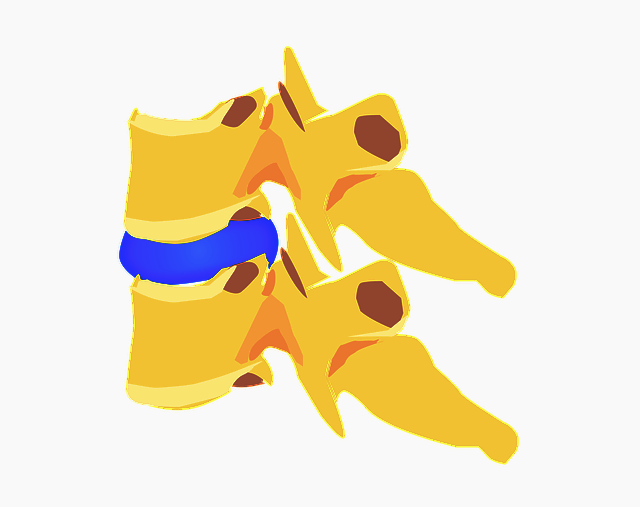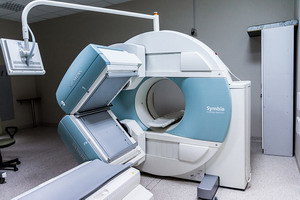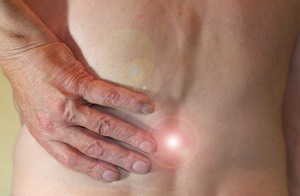
Discs, everybody has lots of them, but sometimes we wish we didn’t. Discs are an amazing adaptation that enables us to be mobile in so many ways that creatures, like insects, just can’t compete. If you don’t try to oppose gravity, discs simply act as lubrication between the vertebra allowing you to move in many directions freely – think snakes. But when you want to regularly oppose gravity by being upright, disc function and structure changes dramatically. Now, instead of simply lubricating the joint between vertebra, the discs have to be structurally strong enough to support the weight of the body above it. Being able to absorb shock, allow movement, and also support weight creates an interesting set of conflicting needs. It is this conflict that often goes haywire and produces an abundance of pain for us.

Most lubricating sacks around joints are simply a tough fibrous sack around the joint that holds in a jelly-like lubricant around the joint. In the spine, our body adapted to the need for strength by enclosing the jelly-like lubricant between the vertebra with 25 to 30 layers of fibrous sack. The end result looks like an onion when cut in half, with just a small blob of jelly in the middle. All those layers of sack tie the two vertebra together and keep them from sliding around. Because the disc/vertebra complex also encloses and protects the spinal cord, we don’t want more than a tiny bit of flexing or twisting. More than a few degrees in any direction and serious damage to the spinal cord results – not a good thing.
The spine seems flexible, but this is because the movement is created by lots of tiny movements added together. With 5 vertebra acting together in the low back, just 4 degrees of movement at each segment allows for 20 degrees of forward or backward and side to side movement. This is about what we actually get from the spine. When we bend forward, most of that movement is actually happening at the hips. Twisting movement is even less. Up in the neck region, where the weight bearing pressure is much much less, the joints allow for a lot more movement.

One of the primary jobs of the discs is to absorb shock. As we walk or jog, the spine bounces up and down. With the shock absorption of the discs, the joints between the vertebra would quickly get damaged and fail. The curves in the spine increase this shock absorption by allowing the tiny muscles between the vertebra to also absorb this shock like a spring. When the disc is absorbing shock, it gets squished down causing the sides to bulge out. This strains the layers of fibrous sack. If the shock is too great, this strain can cause some or all of these layers to tear. When all of them tear we get the infamous disc rupture. The jelly material in the center squirts out and usually squashes the nerve next to them. If only some of the layers tear (usually the inner layers first) the outer layers produce a bulge which also pushes on the nerve in that area, but not as badly… usually. A key feature of a bulge versus a rupture is that a bulge can get better or worse depending on the amount of pressure being placed on them. A rupture is all bad all the time. This is one of the key differences I look for in patients to know if I can help them. Basically there is nothing I can do about a ruptured disc.

Interestingly, if you can stand the pain, a rupture is actually a “better” type of injury. This was discovered accidentally in England because of their socialized medicine system. Over there it was taking over 2 years to get a surgery for a blown disc (ruptured). Patients would get an MRI diagnosing the damage right away. Then they would get another one just before their scheduled surgery. Most of the time the ruptured disc injuries were resolved while the bulging discs were no better. It was discovered that this was because the type of white blood cells designed to eat up damaged tissue could not get to the inside of the bulging disc because the outer layer was still intact. The ruptured disc material was open to digestion by the white blood cells, allowing for a natural fusion of the disc area.

What causes disc injuries? Obvious compressive shock to the spine caused by a fall or a sudden pressure on the spine, like having to support an extra heavy weight, is a common cause of disc injury. But these days I see mostly degenerative disc disease. This is caused by too much sitting creating poor muscle tone around the spine. Poor tone allows for excessive motion at the disc area producing chronic irritation. The body responds to chronic irritation by sending lots of calcium to the area. The body figures that if the area is unstable then you must need to build strong bone around the area to try to fuse the area. This calcium plugs up the pores in the fibrous layers that let water into the jelly in the middle at night. This is vital because during the day the pressure squeezes the water out of the center of the disc like squeezing water out of a dish rag. By the end of the day you are actually 1-2 inches shorter because of this. At night this water is supposed to rehydrate the center of the disc for the next day. The calcium plugging the pores stops this and the disc dries out. This is called disc desiccation and makes the discs thinner and more brittle. The result is the space for the nerves is reduced and pressure on the nerves results. As you know, nerve pressure is felt by you as pain.


Full correction for this problem is not available. We don’t have a way of getting rid of that calcium once it has plugged up the pores in the outer layers of the discs. What we want to do is reduce the irritation so it does not get worse by improving the stability of the area. A portion of the pressure on the nerves is also caused by the swelling of the tissue from the irritation. By relieving this we can usually greatly help the pain diminish. I focus on several things to get this irritation and swelling down. First is to normalize the movement of the area by relieving the muscle spasms created by the pain. I use non-force adjusting with the activator adjusting tool to realign the vertebra. I use a disc pump to open up the spacing between the vertebra with traction right at the specific involved joint. This releases the spasm of the tiny muscles between the vertebra that squeeze them together. I recommend the use of heat and cool to stimulate circulation to flush away the inflammatory chemicals and reduce swelling. I give the patient specific exercises called Foundation Exercises to strengthen the stability muscles around the spine to prevent further excessive motion that started the problem in the first place. Find link here. I also suggest specific anti-inflammatory nutrients like curcumin and an anti-inflammatory diet. And recently I have been adding red light therapy to stimulate healing of the inflamed tissues.
The combination of all these modalities will usually greatly reduce the pain in the back and frequently eliminate it all together. Be cautioned that the core issue is still there. The calcium plugging the pores and the thinning of the discs is still present. This means that the area is much more sensitive to poor posture, excessive sitting, bad bio-mechanics with lifting, and so on. Years of gradual abuse leaves its mark. But with good exercise habits, good diet, proper sitting with good posture, and good self care most patients are able to do quite well.
I had a couple hot disc patients last week that brought this subject up for me, so I thought I would share, since this is an issue that many of us will experience eventually.
Take care,
David
